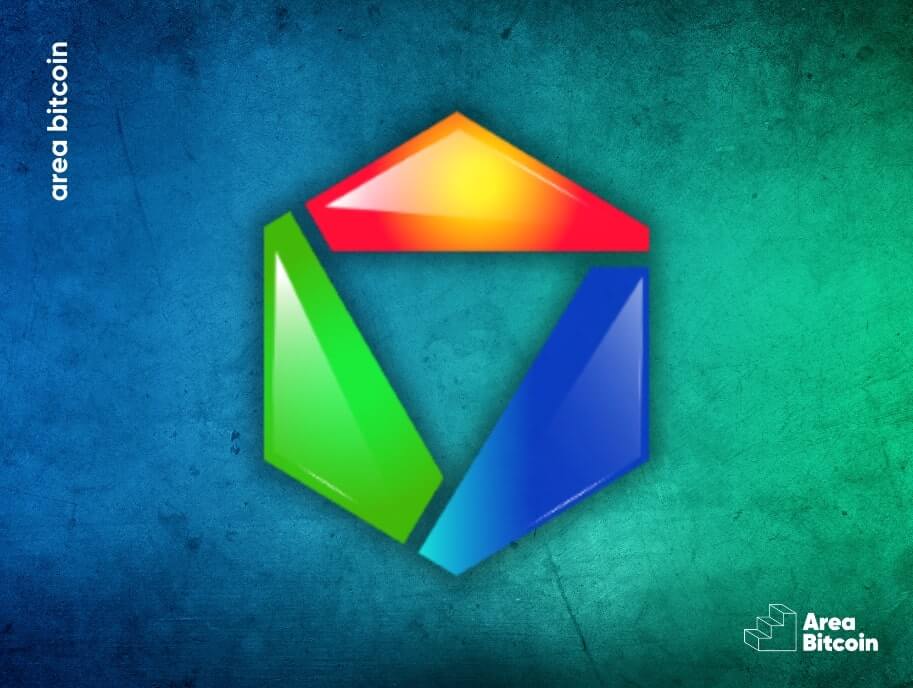The emergence of Bitcoin introduced a new vision of money and its uses. From this, several other financial and digital innovations were spawned. However, Bitcoin’s impact extended beyond just monetary applications; it also paved the way for the possibility of an alternative financial system to the existing one.
Bitcoin enabled the creation of a global, decentralized, and digital financial ecosystem that encompasses various asset classes and utilities. Among the numerous innovations that have occurred within Bitcoin over the years is the Liquid Network, a layer-2 (L2) solution that offers a new method of integrating digital assets into Bitcoin.
Let’s learn more about the Liquid Network!
Table of Contents
Bitcoin layer-2 networks
Bitcoin has opened up the possibility of an alternative financial system to the traditional one, and the network itself has been slowly updating its functionalities since 2009.
User demand has been a significant driving force behind these updates, which, as time has passed and the number of users has increased, have become necessary for Bitcoin to become more scalable and meet global financial needs.
However, layer one, where blockchain records are created and distributed, is not scalable enough.
Bitcoin was designed to evolve in layers, with stacks of interconnecting protocols. So, layer one, or L1, is responsible for keeping the network secure and decentralized.
Scalability functions, such as fast and cheap transactions, were directed to adjacent layers above L1, beyond the Bitcoin blockchain, as attempting to include all functionality on the blockchain has been shown to compromise the security and decentralization of the network completely.
It was from this concept that layer-2 networks, such as Liquid Network and the Lightning Network, as well as sidechain protocols, emerged. These networks are built parallel to Bitcoin and offer financial solutions to users. Layer one maintains its primary function, while layer two focuses on innovation, cost reduction, and speed.
It is as if, to use these parallel networks, the Bitcoin network (on-chain) served as a foundation for us to leverage various financial mechanisms with Bitcoin without compromising the security and decentralization of the main network.
In short, Bitcoin’s L1 has some scalability limitations; therefore, building multiple solutions within it would be very cumbersome and expensive. They likely wouldn’t even be scalable. That’s why layer-2 networks have emerged, providing important solutions that utilize the Bitcoin blockchain as a ‘base’ without compromising the security of the main chain.
What is the Liquid Network?
The Liquid Network is a Bitcoin sidechain, a parallel network that facilitates faster and more confidential transactions, as well as the issuance of new digital assets, using Bitcoin as a base. It was developed by the company known as Blockstream and utilizes Elements resources.
Elements, in turn, is an open-source blockchain compatible with sidechains. It provides a variety of community-developed features, including the execution of confidential transactions and the capability to issue new assets.
It is important to note that Liquid is governed by a federation, which includes several members such as exchanges, wallets, and companies that provide services related to Bitcoin.
For users, Liquid offers the possibility of transferring Bitcoin between the Bitcoin on-chain network and the Liquid network itself, through a bidirectional connection.
In this context, the bitcoins used in Liquid are referred to as L-BTC and are pegged at a 1:1 ratio with BTC, maintaining an equivalent value.
This equivalence between L-BTC and BTC is verified by Liquid’s members, known as functionaries, who are responsible for operating specialized hardware to confirm transactions and safeguard the network’s Bitcoin funds.
What is the Liquid Federation?
The Liquid Federation is a group of organizations that includes exchanges, companies, wallets, trading desks, and developers. These entities perform critical functions for the Liquid Network protocol.
As such, the Liquid Federation consists of numerous members who are geographically and geopolitically dispersed around the world.
Federated members are responsible for governing the network. However, users can monitor all network activity by running a Liquid node.
The structure of the federation is divided into 3 parts:
- Functionaries: who run the specialized hardware to verify transactions and protect the network’s Bitcoin funds.
- Members: Besides transferring funds between the Liquid and Bitcoin networks, these participants also vote in board elections and on new updates.
- Full Nodes: These nodes ensure that functionaries act correctly and verify transactions moving from the Bitcoin network to the Liquid network.
So, the Liquid Network comprises approximately 60 members, with 15 serving as functionaries, responsible for:
- Confirming new blocks
- and securing and managing Bitcoin funds held in the network’s multi-signature wallet.
Governance is overseen by 3 councils, responsible for membership, supervision, and technology. Each council consists of 5 federation members, elected annually through a voting process.
This governance system outlines the internal workings of the network. Nevertheless, anyone worldwide can access and use Liquid through its applications and can purchase L-BTC for transactions within the network.
How does the Liquid Network work?
The Liquid Network functions as a sidechain that facilitates the transfer of BTC to and from the Bitcoin mainchain via a two-way peg, maintaining a 1:1 parity.
As mentioned earlier, Liquid Bitcoin (L-BTC), a “wrapped” version of BTC, is issued on this network.
What are the main features of Liquid Network?
Liquid’s primary objective is to serve as a global, decentralized financial system underpinned by Bitcoin.
Therefore, the network offers other several functionalities, such as:
- Fast final settlements: Bitcoin moved to Liquid (liquid Bitcoin, i.e. “L-BTC”) can reach final settlement within two minutes.
- Confidential transactions: The amounts and types of assets transacted remain hidden by default on Liquid, ensuring the protection of users’ financial data.
- Tokenization: New tokens can be issued on Liquid to represent fiat currencies, bonds, or other digital assets.
- Interoperability: Integration with Liquid One supports L-BTC and issued assets. All tokens follow the same standard, allowing users to take advantage of features like atomic swaps and multisig, Bitcoin-style.
Transfers between L-BTC and BTC
Transferring Bitcoin to Liquid (L-BTC), known as a peg-in, involves the user sending Bitcoin to an address generated by a Liquid wallet or app. After sending, the user then creates a peg-in transaction to claim their L-BTC on Liquid.
A peg-in transaction requires 102 confirmations on the Bitcoin network to ensure the safety of all participants, especially in the event of a block reorganization.
To transfer L-BTC back to Bitcoin, a peg-out operation is necessary. These operations are carried out in batches, with each round taking a minimum of 17 minutes to complete.
However, the confirmation time for these operations can vary between 11 and 35 minutes, depending on network conditions.
What is peg-in?
Peg-in is the process through which users transfer BTC to the Liquid blockchain. This involves sending BTC to a Bitcoin address that is managed by the Liquid Federation.
In exchange, the Federation issues an equivalent amount of L-BTC to the user. With L-BTC, users can then engage with the Liquid chain and its broader ecosystem.
What is peg-out?
As we have already seen, peg-out is the method used when a user wishes to convert their L-BTC back into BTC on the Bitcoin network. To initiate this process, the user sends L-BTC to a burn address, where the funds are permanently removed from the Liquid network.
Following the confirmation of this transaction, the Liquid Federation releases an equivalent amount of BTC back into the Bitcoin network and transfers it to the user.
How to acquire L-BTC?
You can acquire L-BTC through various platforms, either by exchanging Bitcoin for L-BTC or purchasing L-BTC with fiat currency.
Platforms to exchange BTC for L-BTC:
- SideSwap
- SideShift AI
- Bisq
- flyp.me
- TDEX
- Boltz Exchange (only Lightning to L-BTC)
Platforms to buy L-BTC:
- AQUA (can be purchased within the wallet)
- Bitfinex
- Bull Bitcoin
- JAN3 Financial
Additionally, there are platforms where you can secure loans with Bitcoin in exchange for L-BTC or exchange satoshis via the Lightning Network for L-BTC.
Here you can check out all the possibilities.
How to use Liquid Network?
After purchasing your first L-BTC, you can begin engaging with operations on the Liquid Network. Using L-BTC in a Liquid wallet is as straightforward as using a traditional Bitcoin wallet.
One tip is to consider using wallets like the Jade Wallet or Blockstream Green Wallet, both developed by Blockstream. These wallets allow you to create accounts for both Bitcoin and L-BTC, offering a convenient and unified management experience. Cool right?!
Anyway, in addition to these, other wallets that support the Liquid Network include:
There are also other applications on Liquid that allow loans, the creation of tokens, and the sale of digital arts, among other services.
- Exchanges between Liquid assets: SideSwap
- Digital Art Market: Raretoshi
- Non-custodial loans: Hodl Hodl
- Stablecoin loan on Liquid: Fuji Money
Projects using Liquid Network
Currently, 2 platforms are prominent on the Liquid Network for Decentralized Finance (DeFi) activities: Hodl Hodl and SideSwap.
Hold Hodl
Hodl Hodl is a peer-to-peer Bitcoin trading application that utilizes multi-sig smart contracts instead of traditional escrow methods.
A pioneer in integration with Liquid Network, the platform simplifies conversion between BTC and L-BTC. Additionally, its “Lend at Hodl Hodl” service allows users to lend L-BTC and Liquid USDT.
SideSwap
SideSwap is an application used to send, receive, and exchange Liquid tokens.
This app seeks to facilitate peer-to-peer trading with atomic swaps, which ensures users have full control over their assets and minimize counterparty risks.
Additionally, SideSwap’s self-managed wallet ensures users hold the keys to their Liquid assets, and the app also makes it easy to convert between BTC and L-BTC.
Advantages of Liquid Network
As we have seen throughout this article, Liquid has a series of features that allow users to use financial mechanisms with Bitcoin as the base and final settlement network.
Therefore, one of the major advantages of the Liquid Network is its function as a global financial system. This means that users can potentially bypass traditional financial systems, opting instead for a Bitcoin-based network that caters to the diverse needs of its users.
Furthermore, new tokens can be created on Liquid, taking advantage of the security and privacy already known from the Bitcoin network.
All transactions have a layer of security, where outsiders do not necessarily need to know what type of asset you transacted on the Liquid Network.
The Liquid Network is also increasingly used to perform L2-to-L2 swaps, especially during periods when transaction fees on the Bitcoin Main network are particularly high.
Disadvantages of Liquid Network
An often criticized aspect of Liquid is the control of the network by a federation, indicating a focus on centralization.
However, despite such criticism, supporters of the network argue that it is preferable to use the Liquid Network—a protocol transparent in its operations and reliant on the decentralization of Bitcoin—rather than turn to cryptocurrencies characterized by pre-mining, private sales to insiders, and hidden vulnerabilities typical of affinity schemes.
The creation of security tokens on a blockchain that does not claim to be decentralized and that can interface with the fiat world, while being backed by BTC, is regarded as a more trustworthy option.
However, there are those who agree and those who disagree with this view…
Anyway, Liquid’s focus on issuing assets and tokens does not sit well with many Bitcoiners, appearing like an attempt to replicate Ethereum’s ERC-20 model.
Perhaps due to the centralization in the federation and the targeting of tokens, the Liquid Network has not yet had significant adoption by Bitcoiners, unlike what happened with the Lightning Network.
Conclusion
Given everything we’ve discussed, we realized that Bitcoin transcends the idea of being just a “digital internet currency”, it came to be much more than that.
Today, several protocols are being built on top of Bitcoin to allow users around the world, with completely different needs, to enjoy all the security and privacy that Bitcoin offers, without being limited to the exclusive use of the currency for transactions.
This places not only Bitcoin (the currency) but also Bitcoin (the network) as the future of the financial system. Currently, several traditional investors can gain exposure to the asset through the recently launched Bitcoin ETF.
However, in the future, we may see these same financial mechanisms being issued on the Liquid Network, for example.
We hope this article enhanced your understanding of the Liquid Network.
Be sure to share it with a friend and opt out!
Share on your social networks:

One of the leading Bitcoin educators in Brazil and the founder of Area Bitcoin, one of the largest Bitcoin schools in the world. She has participated in Bitcoin and Lightning developer seminars by Chaincode (NY) and is a regular speaker at Bitcoin conferences around the world, including Adopting Bitcoin, Satsconf, Bitcoin Atlantis, Surfin Bitcoin, and more.
Did you like this article? Consider buying us a cup of coffee so that we can keep writing new content! ☕







